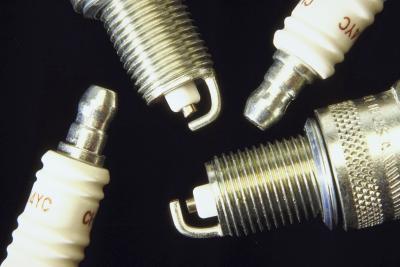
Replacing the spark plugs on an engine, whether it’s 3.5-liters in size or a larger or smaller displacement, is a routine aspect of maintenance and should be done whenever the vehicle receives a major tuneup. Most spark plugs last anywhere from 12,000 to 15,000 miles and occasionally even longer before they need to be replaced; however if the engine in your car is not running correctly it may need spark plugs more often due to fouling or other issues.
Open the hood so that you can access the motor. If the vehicle has recently been driven, allow it to cool down before attempting to remove the spark plugs because the engine and nearby components get very hot.
Remove the engine cover if there is one. Not all engines feature engine covers, though most newer cars probably will. Remove the bolts or clips that hold the engine cover in place and set the cover aside.
Locate the spark plugs and spark plug wires. 3.5-liter engines come in a variety of configurations, including straight-6 engines, V6 and V8 engines. If the engine is a straight-6, the spark plugs are located on one side of the head in a row. On a V8 or V6 the plugs will have an equal number on either side of the engine for the two heads.
Remove the spark plug wires or the coils if the engine uses a coil directly on each plug. To remove the spark plug wire, pull firmly but carefully on the base of it where it attaches to the spark plug. Do not pull on the wire itself, as this may cause damage to it. Do not mix up the order of the spark plug wires. Either replace the plugs one at a time or label the spark plug wires with tape and a marker. If the vehicle uses coils, unclip these or unbolt them from the engine and disconnect the wiring harness. Keep track of which coil goes where.
Remove the spark plugs with a spark plug socket and ratchet. Insert the spark plug tool in the hole where the plug is located until you feel the rubber insert in the socket grab and seat onto the spark plug. Loosen the plug by turning the socket counterclockwise and carefully remove it from the engine without dropping it.
Gap the new plug before installing it. The plug gap will vary depending on the type of plug and the engine it is going into. Consult your workshop manual or refer to the directions from the plug manufacturer. Gapping the plug is done with a tool that is slid between the electrode and the contact on the end of the plug until the gap corresponds to the number on the spark plug gapper.
Insert the spark plug into the engine with the socket. Carefully thread it into the head, ensuring that the spark plug does not cross-thread (thread in crooked), which will damage both the plug and the engine. Tighten the plug according to the workshop manual for your car with a torque wrench. This setting will vary depending on the make. You can also simply tighten the plugs firmly by hand but do not over tighten them.
Replace the spark plug wires or coils in the proper order. Replace the engine cover and any other components that may have been removed to access the spark plugs. Start the engine to ensure that it is running correctly.